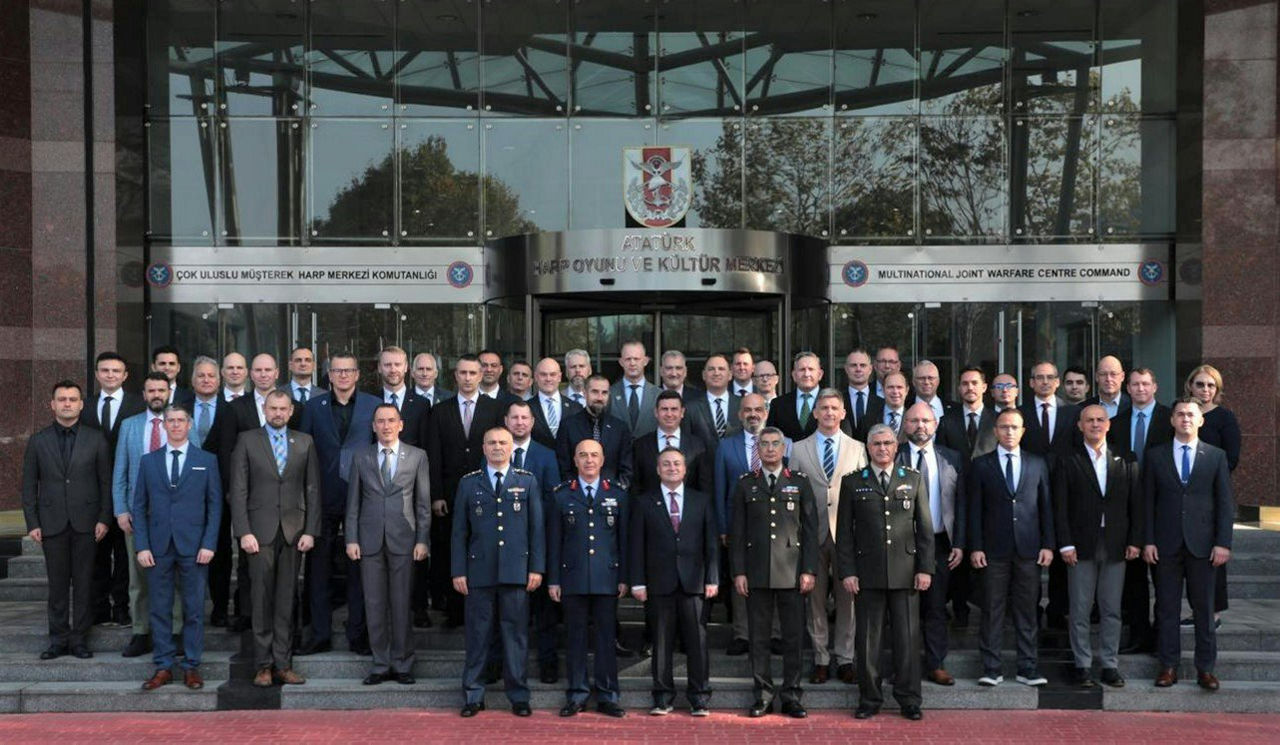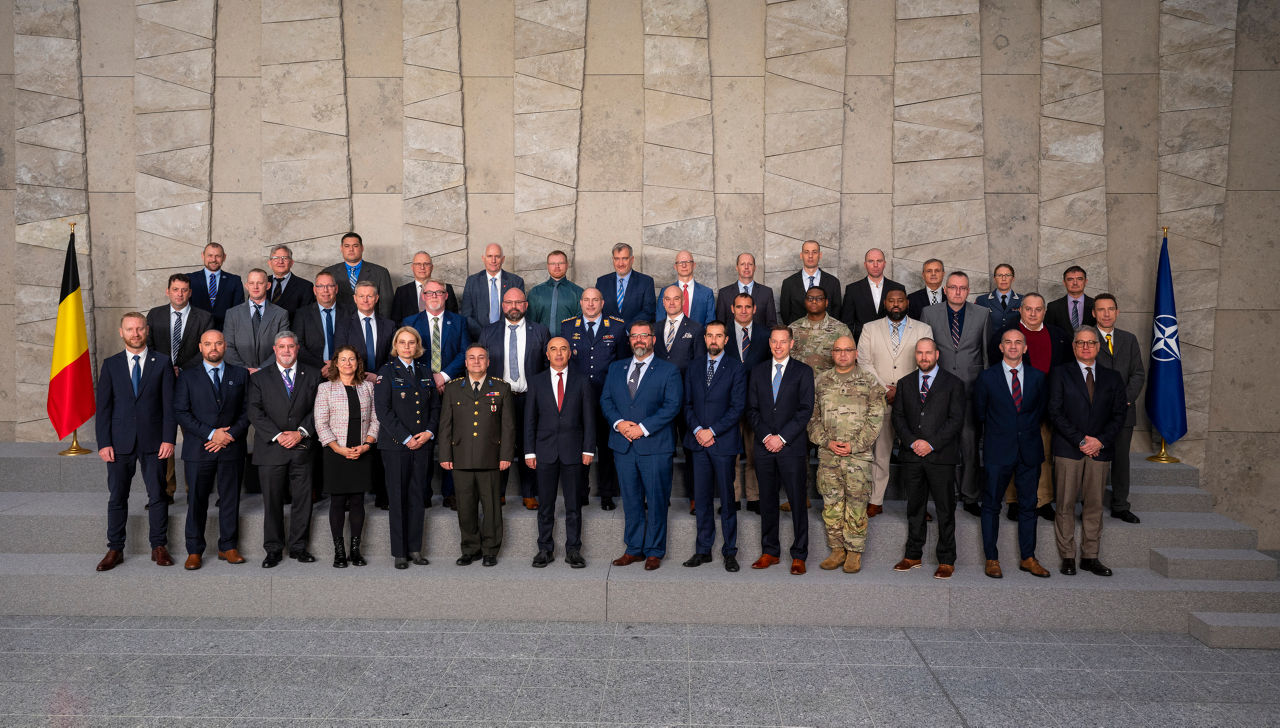Download NATO’s broadcast-quality video content free of charge

Log in
NATO MULTIMEDIA ACCOUNT
Access NATO’s broadcast-quality video content free of charge

Check your inbox and enter verification code
You have successfully created your account
From now on you can download videos from our website
Subscribe to our newsletter
If you would also like to subscribe to the newsletter and receive our latest updates, click on the button below.
Enter the email address you registered with and we will send you a code to reset your password.
Didn't receive a code? Send new Code
The password must be at least 12 characters long, no spaces, include upper/lowercase letters, numbers and symbols.
Your password has been updated
Click the button to return to the page you were on and log in with your new password.
Electromagnetic warfare
Updated: 22 March 2023
Military operations conducted in all environments use the electromagnetic spectrum to create effects that support military objectives. As a part of the battlespace, NATO forces conduct Electromagnetic Operations (EMO) in the Electromagnetic Environment (EME). EMO involves activities that exploit the EME to enable or enhance NATO operations and hinder the potential adversary's ability to do the same. As the combat arm of EMO, Electromagnetic Warfare (EW) activities provide military action that exploits electromagnetic energy to provide situational awareness and create offensive and defensive effects.
- From attacks on radar systems, to jamming of communications and navigation systems, to electronic masking, probing, reconnaissance and intelligence gathering, EW can be applied in all operational domains – air, land, maritime, space and cyber. It is therefore vital that NATO remains ready and able to counter any potential adversary’s use of EW.
- EW should not be confused with cyber warfare and capabilities. Broadly speaking, cyber operations use various hacking techniques to infiltrate and disrupt a target’s computer systems, in order to obtain intelligence or degrade the target’s capabilities. EW uses directed energy to cut off access to the electromagnetic spectrum, blocking signals between technologies and rendering them inoperable. Of course, by interfering with computer infrastructure, EW can affect operations in the cyber domain.
- The NATO Electromagnetic Warfare Policy and NATO Electromagnetic Spectrum (EMS) Strategy govern the Alliance’s use, development, testing and training of EW capabilities and tactics.
- NATO conducts exercises where Allies test out advanced EW techniques against simulated threats using state-of-the-art electronic defences. Observations and lessons learned from these exercises help identify gaps and shape recommendations to prepare NATO for future developments in electromagnetic warfare.
- Electromagnetic warfare was previously referred to as ‘electronic warfare’ by NATO, and the two terms are often used interchangeably. ‘Electromagnetic warfare’ is now preferred, to emphasise the importance of the electromagnetic spectrum in EW.
NATO Electromagnetic Warfare Advisory Committee (NEWAC)
The NEWAC is the principal forum within NATO for consultation and coordination of EW-related matters. This committee is responsible for advising and carrying out the policies of the Military Committee, NATO’s senior military authority, which advises the North Atlantic Council.
The NEWAC consists of voting members, one from each NATO member country, plus non-voting representatives from the International Military Staff, the two Strategic Commands and other NATO entities as appropriate. The national member is usually the senior national EW military official or the head of the national military inter-service EW organisation. The representative of each Strategic Command is the senior EW staff officer within the respective command.
The NEWAC has two working groups:
NATO Electromagnetic Warfare Working Group (NEWWG)
The NEWWG is responsible to the NEWAC. Its mission is to support and prepare recommendations to the NEWAC on EW matters. The working group advises the NEWAC on the development of NATO joint EW standards, policy and doctrine affecting all operational domains. The NEWWG also assists in developing EW tactics, drafts and proposes changes to all EW-related documents, and liaises with other NATO bodies dealing with EW, as directed by the NEWAC.
NATO Emitter Database Advisory Group (NEDBAG)
The NEDBAG is responsible to the NEWAC. Its mission is to review and supervise the development and maintenance of the NATO Emitter Database (NEDB), an information-sharing tool that identifies and describes electromagnetic systems and associated platforms.
NATO Joint Electronic Warfare Core Staff (JEWCS)
The JEWCS is a multinational military unit that provides NATO Commands and Allied forces with EW expertise, support and training at the tactical, operational and strategic levels for operations and exercises. It also maintains and distributes the NEDB, and advises the NEWAC through the Director JEWCS. The NATO JEWCS is based at Royal Naval Air Station Yeovilton in the United Kingdom and includes participants from a number of other Allies. It is under operational command of the Supreme Allied Commander Europe (SACEUR).
Evolution
Since the founding of NATO more than 70 years ago, Allied civilian and military leaders have understood the importance of securing the electromagnetic environment in peacetime and during conflict. In October 1956, the Military Committee approved MC 0064, the NATO Electronic Warfare Policy. The Alliance subsequently developed the NATO Electronic Warfare Working Party and then the NATO Electronic Warfare Liaison Committee (NEWLC) to coordinate EW policy, equipment, training courses and publications among Allies.
The Alliance’s current coordinating body for EW, the NATO Electromagnetic Warfare Advisory Committee (NEWAC), was introduced in 1966 as the NATO Electronic Warfare Advisory Committee. NATO now uses the term ‘electromagnetic warfare’ to more precisely identify the importance of the electromagnetic spectrum in EW. The NEWAC and its subgroups supports the Military Committee, the NATO Strategic Commanders and the member countries, and promotes effective NATO EW capability. Since its establishment, the NEWAC has met on an annual or semi-annual basis in plenary conferences, to bring together national subject-matter experts.
EW policy at NATO continues to be covered under MC 0064. This policy has been revised several times in order to keep pace with changes in the electromagnetic and operational environment, the NATO Command Structure and the threats facing the Alliance. This policy is agreed by all Allies and provides the overarching guidance required to formulate common doctrine and interoperability standards.
Although present since the First World War and in every conflict since, EW has evolved constantly and remains a challenge for the Alliance. The technologies developed are rapidly changing and NATO’s capabilities are following.



